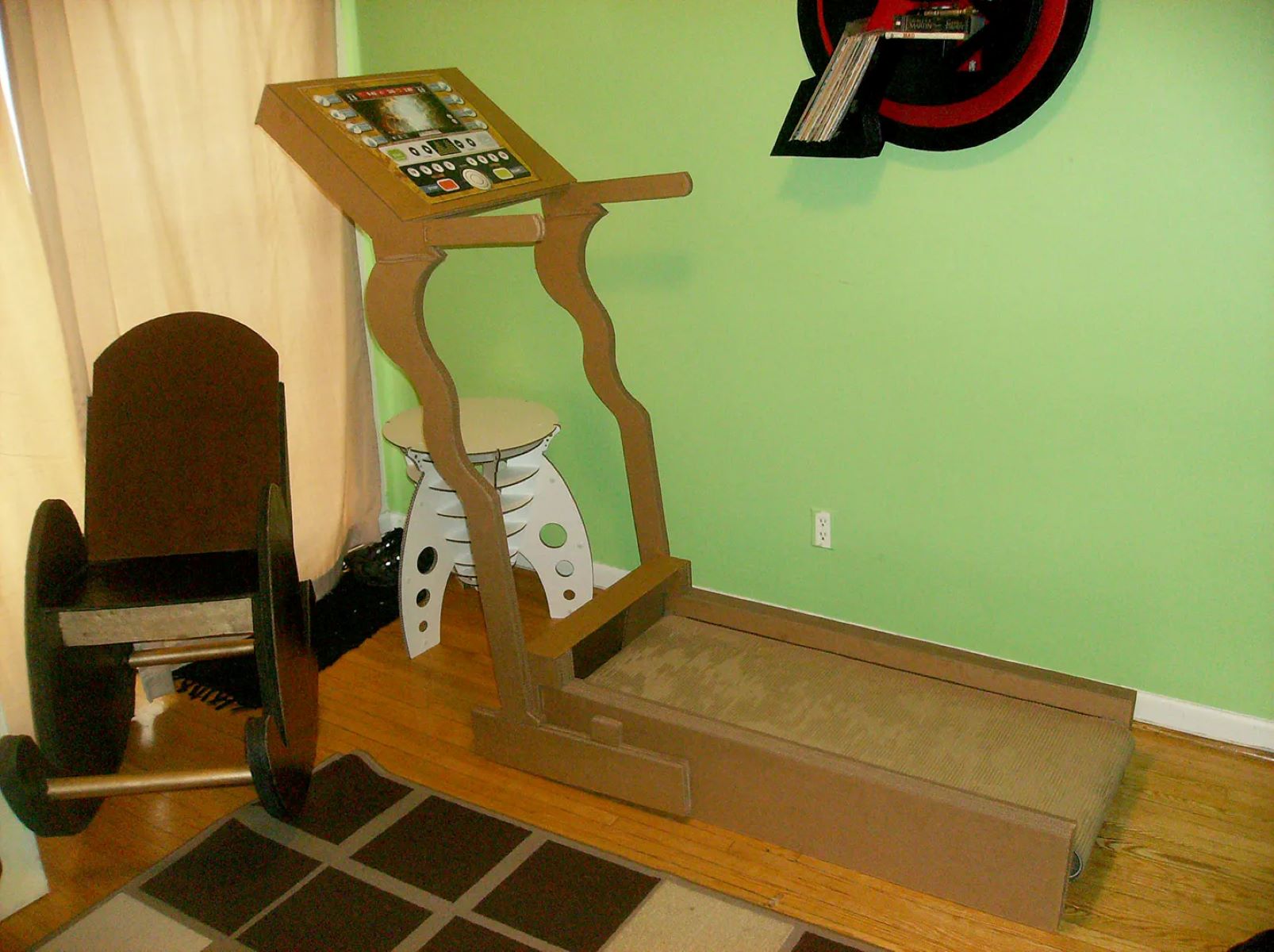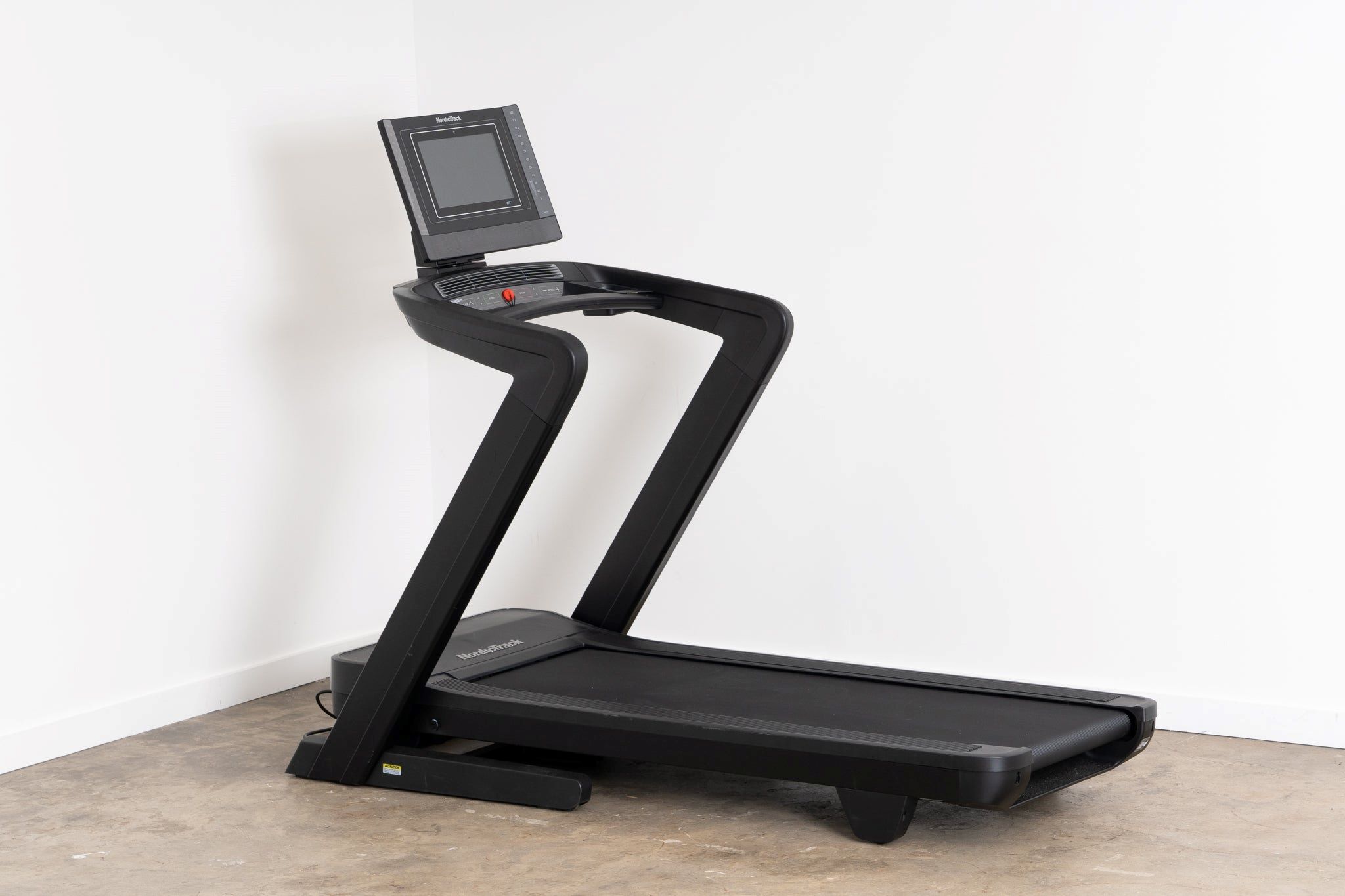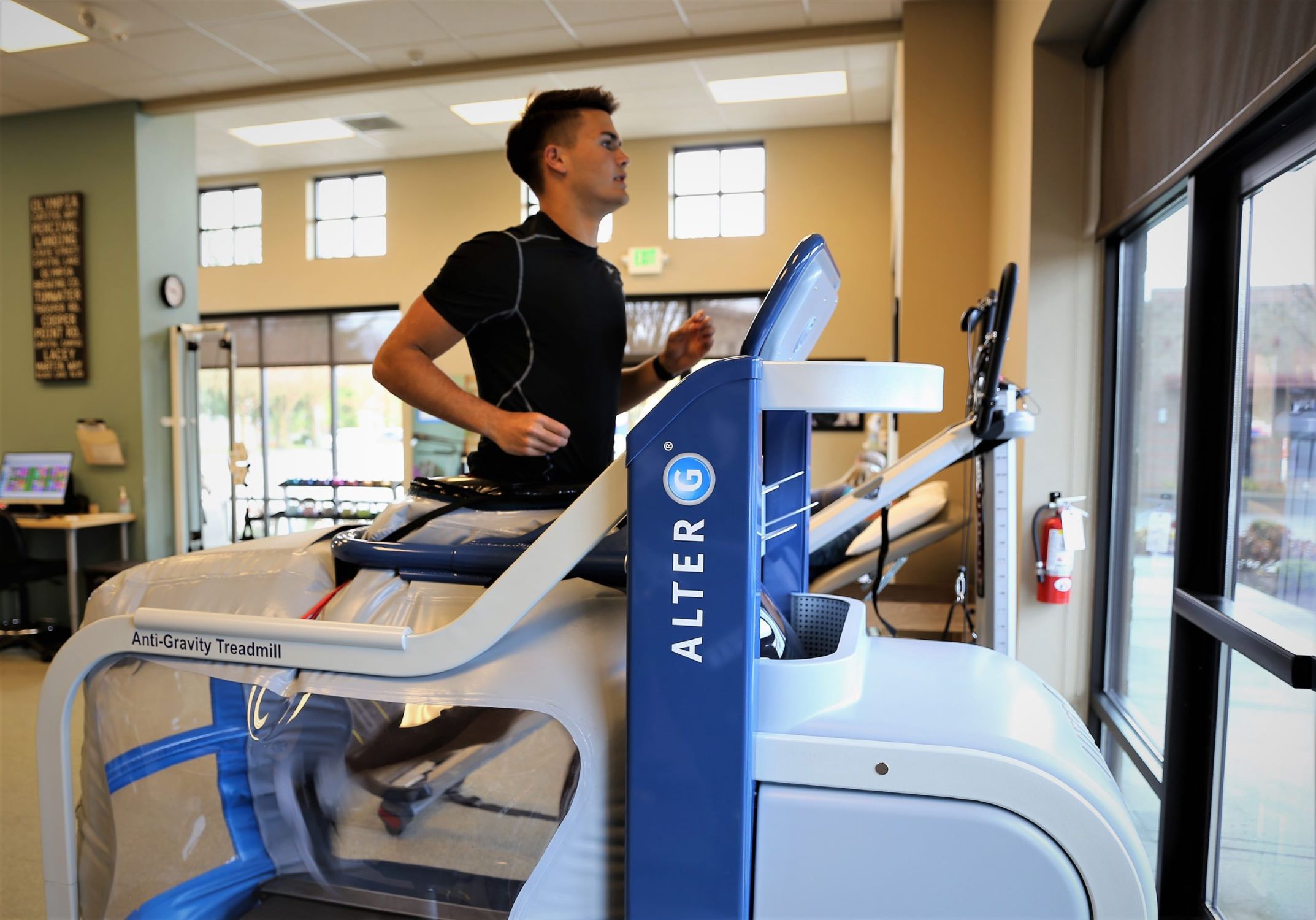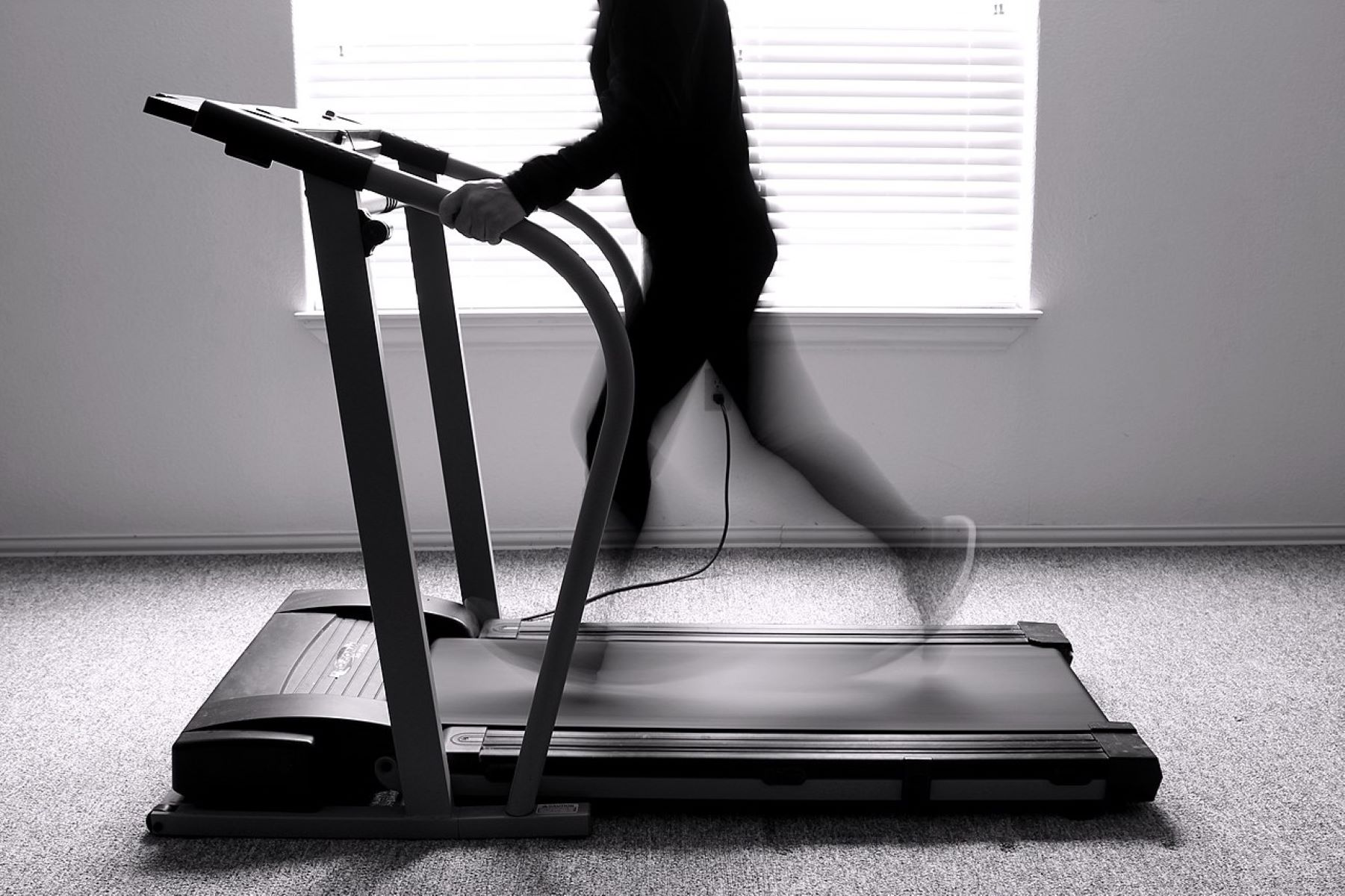Home>Misc>Featured>How Long Should You Walk On Treadmill To Lose Weight
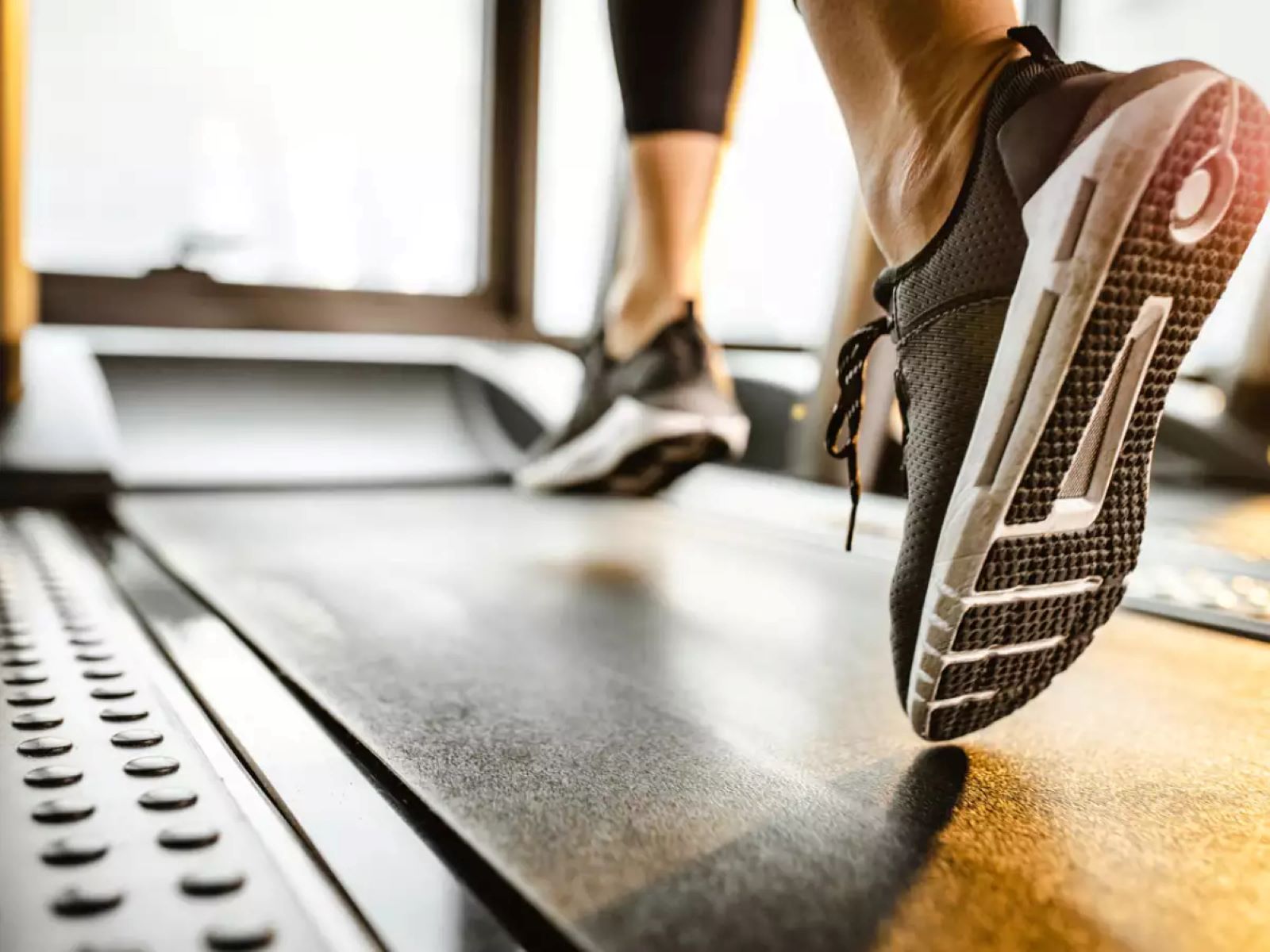

Featured
How Long Should You Walk On Treadmill To Lose Weight
Modified: August 21, 2023
Achieve your weight loss goals with our featured guide on how long you should walk on a treadmill. Find out the effective duration to shed those pounds and get in shape.
Introduction
When it comes to losing weight, finding the right exercise routine can be a challenge. But one activity that has proven to be effective for many people is walking on a treadmill. Not only is it accessible and convenient, but it also provides a low-impact workout that can be tailored to individual fitness levels.
In this article, we will explore how long you should walk on a treadmill to lose weight and the factors that can affect your weight loss journey. We will also provide tips and guidelines to help you make the most of your treadmill workouts and reach your weight loss goals.
Walking is a versatile and accessible form of exercise that can be done by people of all ages and fitness levels. It is a weight-bearing exercise that helps burn calories, build endurance, and improve cardiovascular health. When done consistently and at the right intensity, walking on a treadmill can contribute to significant weight loss.
Before we delve into the specifics, it’s important to understand that weight loss is a complex process influenced by various factors, including diet, genetics, overall health, and lifestyle. Walking on a treadmill alone may not guarantee immediate or drastic weight loss, but when combined with a balanced diet and overall healthy lifestyle, it can be a valuable tool in your weight loss journey.
It’s also essential to set realistic expectations and focus on long-term results rather than quick fixes. Sustainable weight loss is a gradual process that requires consistency, patience, and determination. Walking on a treadmill can be an excellent starting point for your weight loss journey, especially if you are new to regular exercise or have joint issues that make other activities more challenging.
In the following sections, we will explore the benefits of walking on a treadmill, the factors that can affect weight loss, and how to determine the optimal duration for your treadmill workouts. We will also provide practical tips and recommendations to help you make the most of your walking sessions and maintain your motivation throughout the process.
Understanding Weight Loss
Before we delve into the specifics of walking on a treadmill for weight loss, it’s important to have a basic understanding of how weight loss occurs.
Weight loss is the result of a calorie deficit, which means you are burning more calories than you consume. When you create a calorie deficit, your body starts using stored fat as a source of energy, leading to weight loss over time.
It’s important to note that weight loss is not solely determined by exercise. Nutrition plays a crucial role in achieving and maintaining a healthy weight. While exercise helps burn calories and contributes to improved overall health and fitness, diet plays an even more significant role in creating a calorie deficit.
That being said, regular exercise, such as walking on a treadmill, can boost your weight loss efforts by increasing your overall calorie expenditure and promoting the development of lean muscle mass. It can also help improve your metabolism, making weight loss more sustainable.
Keep in mind that weight loss is a personalized journey, and the rate at which you lose weight can vary based on factors such as age, gender, genetics, body composition, and overall health. It’s essential to focus on overall health improvements and not just the number on the scale.
During your weight loss journey, it’s crucial to maintain a balanced and nourishing diet that includes a variety of nutrient-dense foods. Combining a healthy diet with regular exercise, such as walking on a treadmill, can help you achieve and maintain optimal weight and overall well-being.
In the following sections, we will explore the benefits of walking on a treadmill and how it can contribute to weight loss. We will also discuss the various factors that can affect your weight loss progress and provide guidelines to help you set realistic goals and determine the optimal duration for your treadmill workouts.
Benefits of Walking on a Treadmill
Walking on a treadmill offers numerous benefits for both physical and mental well-being. Let’s explore some of the key advantages of incorporating treadmill walking into your weight loss journey.
1. Convenient and accessible: One of the main advantages of walking on a treadmill is its convenience. You can walk whenever you want, regardless of the weather or time of day. With a treadmill at home or access to a gym, you have the freedom to exercise at your convenience.
2. Low-impact exercise: Walking on a treadmill is a low-impact exercise that puts minimal stress on your joints. Compared to high-intensity exercises like running or jumping, walking is gentler on your knees, hips, and ankles. This makes it a suitable option for individuals with joint issues or those new to exercise.
3. Increased calorie burn: Walking on a treadmill helps burn calories, contributing to weight loss. The number of calories burned depends on factors such as speed, incline, and duration of your walking session. By gradually increasing the intensity of your workouts, you can maximize calorie expenditure, helping you achieve your weight loss goals.
4. Improved cardiovascular health: Walking on a treadmill elevates your heart rate, enhancing cardiovascular health. Regular aerobic exercise, such as brisk walking, can lower your risk of heart disease, improve blood circulation, and strengthen the heart muscle.
5. Boosted mood and mental well-being: Exercise, including walking on a treadmill, stimulates the release of endorphins, which are natural “feel-good” hormones in the body. This can help reduce stress, anxiety, and symptoms of depression, promoting overall mental well-being.
6. Flexibility and customization: Treadmills offer various options to customize your walking routine. You can adjust the speed, incline, and intensity to match your fitness level and goals. This allows you to gradually increase the difficulty of your workout as you become fitter and more comfortable.
7. Diverse workout options: Treadmills often come equipped with pre-programmed workouts that can add variety to your routine. These programs may include intervals, hills, or specific training regimes, making your walking sessions more engaging and challenging.
By incorporating treadmill walking into your weight loss journey, you can enjoy these benefits while working towards your fitness and weight loss goals. In the next section, we will discuss the factors that can affect your weight loss progress on a treadmill and how to set realistic goals for your journey.
Factors Affecting Weight Loss on a Treadmill
While walking on a treadmill can be an effective tool for weight loss, it’s important to understand that several factors can influence the rate at which you shed pounds. By being aware of these factors, you can make necessary adjustments to optimize your treadmill workouts and maximize your weight loss progress.
1. Frequency and duration: The frequency and duration of your treadmill walks can impact your weight loss journey. Consistency is key, so aim for regular sessions rather than sporadic workouts. Gradually increase the duration and intensity of your walks over time to challenge your body and promote weight loss.
2. Intensity and speed: The intensity of your treadmill workout plays a significant role in calorie burn and weight loss. Walking at a brisk pace or incorporating intervals of higher intensity can increase your heart rate and maximize calorie expenditure. Experiment with different speeds and intensities to find a comfortable yet challenging level for your fitness level.
3. Incline: Walking on an incline creates additional resistance, which can enhance your calorie burn and engage different muscle groups. By adjusting the incline on your treadmill, you can simulate walking uphill and give your workout an added challenge.
4. Body composition: Your body composition, which includes factors such as muscle mass and fat percentage, can impact how quickly you lose weight. Individuals with a higher muscle mass tend to have a faster metabolism and may experience more significant weight loss compared to those with a higher percentage of body fat.
5. Diet and calorie intake: Weight loss is not solely dependent on exercise; your diet plays a crucial role as well. To create a calorie deficit necessary for weight loss, it’s important to pay attention to your calorie intake and make healthier food choices. Combining a balanced diet with treadmill walking can optimize your weight loss efforts.
6. Rest and recovery: Proper rest and recovery are essential for weight loss and overall well-being. Overtraining can lead to fatigue and hinder your progress. Give your body time to recover between workouts and listen to your body’s signals.
7. Consistency: Consistency is key when it comes to weight loss. Building a consistent routine and sticking to it is crucial for long-term results. Set realistic goals and make physical activity a non-negotiable part of your daily or weekly schedule.
Keep in mind that every individual is unique, and weight loss progress can vary depending on these factors. It’s important to focus on your personal progress and make adjustments that work for your body and lifestyle.
In the next section, we will discuss how to set achievable goals for your weight loss journey and determine the optimal duration for walking on a treadmill.
Setting Goals for Weight Loss
Setting achievable goals is crucial in any weight loss journey, including when using a treadmill for exercise. By establishing clear and realistic objectives, you can stay motivated and track your progress effectively. Here are some tips for setting goals that will contribute to a successful weight loss journey on a treadmill:
1. Be specific: Outline exactly what you want to achieve. Instead of saying, “I want to lose weight,” specify how much weight you want to lose and by when. For example, “I want to lose 10 pounds in the next three months.”
2. Set realistic goals: While it’s essential to challenge yourself, setting unrealistic goals can lead to frustration and disappointment. Ensure your goals are attainable and consider factors such as your current fitness level, lifestyle, and time constraints.
3. Break it down: Divide your ultimate weight loss goal into smaller, more manageable milestones. For example, aiming to lose 2 pounds per week or tracking your progress monthly can help you stay motivated and maintain focus.
4. Focus on non-scale victories: While weight loss is often the primary goal, it’s essential to celebrate other accomplishments along the way. Track improvements in your fitness level, increased energy levels, or improved mood as indicators of progress.
5. Incorporate behavior-based goals: Alongside weight loss goals, consider setting behavior-based goals that focus on establishing healthy habits. For example, committing to walk on the treadmill for at least 30 minutes five times a week or incorporating more whole foods into your diet.
6. Make your goals measurable: Use quantifiable metrics to measure your progress. This could be tracking the distance walked, the time spent on the treadmill, or the number of calories burned during each session. Keeping a log or using fitness tracking apps can help you monitor your achievements.
7. Stay flexible: Adapt your goals as necessary to stay motivated and overcome obstacles. Life can throw curveballs, so be willing to make adjustments to your schedule or approach when needed.
Remember that weight loss is a journey, and progress may not always be linear. Stay patient, focus on sustainable habits, and celebrate the small wins along the way.
In the next section, we will discuss how to determine the optimal duration for walking on a treadmill to maximize your weight loss efforts.
Determining the Duration of Walking on a Treadmill
When it comes to determining the optimal duration for walking on a treadmill to maximize weight loss, several factors come into play. It’s important to find the right balance that challenges your body without pushing it too far. Here are some guidelines to help you determine the ideal duration for your treadmill workouts:
1. Consult with a professional: If you’re new to exercise or have any underlying health conditions, it’s advisable to consult with a healthcare professional or a certified fitness trainer. They can help assess your current fitness level and provide personalized recommendations for your treadmill workouts.
2. Start slow and gradually increase: If you’re just starting, begin with shorter duration walks and gradually increase the time as your fitness improves. This allows your body to adapt and reduces the risk of injury or burnout. Aim to increase your walking duration by 5-10 minutes per week to challenge yourself over time.
3. Consider your fitness level: Your fitness level plays a crucial role in determining the duration of your treadmill walks. If you’re relatively fit, you may be able to sustain longer workouts. However, if you’re new to exercise or have physical limitations, starting with shorter durations and gradually building up is key.
4. Set specific goals: Determine the specific weight loss or fitness goals you want to achieve. This will help guide you in setting a duration that aligns with your goals. For example, if you’re aiming for moderate weight loss, a recommendation of 150 minutes of moderate-intensity aerobic activity, such as brisk walking, per week from organizations like the American Heart Association can serve as a benchmark.
5. Listen to your body: Pay attention to your body’s signals during your treadmill walks. If you feel fatigued or overly exhausted, it may be a sign that you need to reduce the duration or intensity of your workouts. Always prioritize your safety and well-being.
6. Mix it up: Instead of solely focusing on the duration of your treadmill walks, consider incorporating interval training or varying your speed and incline. This can add variety to your workouts and keep your body challenged, even if the duration remains consistent.
7. Consider time constraints: Assess your schedule and determine how much time you can realistically dedicate to treadmill walking. It’s better to have shorter, consistent workouts than long sessions that you struggle to fit into your routine. Even a 30-minute walk can provide significant health benefits when done regularly.
Remember, the duration of your treadmill walks is just one aspect of your weight loss journey. Combining it with a balanced diet, proper hydration, and overall healthy lifestyle habits is key to achieving sustainable weight loss and overall well-being.
In the next section, we will provide some practical tips to help you make the most of your treadmill walking sessions.
Recommended Duration for Weight Loss
When it comes to determining the recommended duration for weight loss through walking on a treadmill, there are several factors to consider. While individual needs may vary, guidelines from reputable sources can provide a helpful starting point:
1. Physical Activity Guidelines: According to the Physical Activity Guidelines for Americans, adults should aim for at least 150 minutes of moderate-intensity aerobic activity or 75 minutes of vigorous-intensity aerobic activity per week. Walking on a treadmill at a brisk pace falls into the moderate-intensity category, meaning that aiming for about 30 minutes of walking for at least 5 days per week is a good benchmark for weight loss goals.
2. Personal Fitness Level: It’s important to consider your personal fitness level when determining the duration of your treadmill walks. If you’re new to exercise or have limited stamina, starting with shorter durations such as 10 or 15 minutes and gradually increasing them over time can be more manageable and sustainable.
3. Weight Loss Goals: Your weight loss goals can also influence the recommended duration of your treadmill walks. If you have a significant amount of weight to lose, you may want to consider longer walking sessions or additional activities to boost calorie burn. Always consult with a healthcare professional or a certified fitness trainer to help you set realistic and personalized weight loss goals.
4. Progression and Gradual Increases: It’s important to progressively increase the duration and intensity of your treadmill walks over time. Gradual increases not only help prevent overuse injuries but also challenge your body and prevent weight loss plateaus. Aim to add an extra 5-10 minutes to your walking sessions every week or two, based on your comfort and fitness level.
5. Consistency is Key: Consistency is crucial for weight loss. Regular and consistent treadmill walking sessions will yield better results than sporadic or infrequent workouts. Aim to establish a routine that allows you to meet the recommended duration for weight loss goals consistently.
Keep in mind that these guidelines are just starting points, and you can adjust the duration based on your individual needs and preferences. It’s also important to consider other aspects of your weight loss journey, such as maintaining a balanced diet, staying hydrated, and getting enough rest and recovery.
In the next section, we will provide some practical tips to help you make the most of your treadmill walking sessions and enhance your weight loss efforts.
Tips for Effective Treadmill Walking
Treadmill walking can be an effective way to achieve your weight loss goals and improve your overall fitness. To make the most of your treadmill workouts, here are some tips to ensure effectiveness and maximize your results:
1. Warm Up: Begin each treadmill session with a warm-up to prepare your muscles and joints for exercise. Start with a slow walk or light jog for 5-10 minutes to gradually increase your heart rate and blood flow.
2. Maintain Proper Posture: Stand tall, engage your core, and keep your shoulders relaxed. Avoid leaning forward or backward, as maintaining proper posture will help prevent strain on your muscles and joints.
3. Adjust Speed and Incline: Incorporate variations in speed and incline to challenge yourself and elevate your workout intensity. Increase the speed or adjust the incline periodically to increase calorie burn and engage different muscle groups.
4. Use Intervals: Incorporate interval training into your treadmill walks by alternating between periods of higher intensity and recovery. For example, alternate between 1-2 minutes of faster-paced walking or jogging and 1-2 minutes of slower, recovery-paced walking.
5. Mix Up Your Workouts: To keep your treadmill workouts interesting and prevent boredom, try incorporating different workout formats. This can include hill workouts, tempo runs, or even adding brief periods of jogging or running if you’re comfortable with higher intensity exercises.
6. Monitor Your Heart Rate: Utilize the heart rate monitors on treadmills or wear a fitness tracker to monitor your heart rate during your workouts. This can help you gauge your exercise intensity and ensure that you’re within your target heart rate zone for optimal calorie burn.
7. Stay Hydrated: Drink water before, during, and after your treadmill walks to stay hydrated. Dehydration can negatively impact your performance and overall well-being.
8. Find Motivation: Make your treadmill walks enjoyable by listening to music, podcasts, audiobooks, or watching TV shows or movies. Having something to keep you entertained can make the time go by faster and keep you motivated.
9. Set Realistic Goals: Establish realistic and achievable goals for your treadmill walking sessions. This can involve targeting a particular distance, calorie burn, or duration. Celebrate your accomplishments along the way to stay motivated and track your progress.
10. Cool Down and Stretch: After completing your treadmill workout, take a few minutes to cool down by gradually reducing your speed and ending with a slow walk. Follow this with post-workout stretching to improve flexibility and reduce muscle soreness.
By following these tips, you can ensure that your treadmill walking sessions are effective, enjoyable, and contribute to your weight loss efforts. Remember to listen to your body, adjust as needed, and stay consistent with your exercise routine.
In the next section, we will discuss the importance of incorporating other exercises along with treadmill walking for optimal weight loss results.
Incorporating Other Exercises for Weight Loss
While walking on a treadmill can be a great exercise for weight loss, incorporating other types of exercises into your routine can further enhance your results. By diversifying your workouts, you can engage different muscle groups, challenge your body in new ways, and improve overall fitness. Here are some exercises you can incorporate alongside treadmill walking to optimize your weight loss efforts:
1. Strength Training: Adding strength training exercises to your routine can help build lean muscle mass, which can increase your metabolism and calorie burn even at rest. Incorporate exercises such as squats, lunges, push-ups, and planks using body weight or resistance bands. Aim for 2-3 strength training sessions per week.
2. High-Intensity Interval Training (HIIT): HIIT workouts involve bursts of intense exercise followed by short recovery periods. This type of training can be done in various ways, such as sprint intervals on a treadmill or bodyweight exercises performed in quick succession. HIIT can significantly increase calorie burn and improve cardiovascular fitness.
3. Cycling: Whether it’s on a stationary bike or cycling outdoors, biking is an excellent cardiovascular exercise that can complement your treadmill walking. It engages different muscle groups and provides a challenging yet low-impact workout. Consider adding cycling sessions to your weekly routine.
4. Swimming or Water Aerobics: If you have access to a pool, swimming or water aerobics can be fantastic options for low-impact, full-body workouts. These exercises provide resistance in a weightless environment, making them gentler on the joints while still providing an effective calorie burn.
5. Group Exercise Classes: Joining group exercise classes can add variety and social support to your fitness routine. Classes such as Zumba, kickboxing, or dance can provide fun and energetic workouts that help burn calories and keep you motivated.
6. Outdoor Activities: Take advantage of the outdoors by incorporating activities like hiking, jogging, or biking into your routine. These activities not only provide physical benefits but also offer the enjoyment of nature and fresh air.
7. Yoga or Pilates: Adding flexibility-focused exercises to your routine, such as yoga or Pilates, can improve your posture, balance, and overall well-being. These exercises can also help alleviate muscle imbalances and reduce the risk of injury.
8. Dance or Aerobic Workouts: Joining dance or aerobic workout classes can be a fun way to get moving and burn calories. These activities combine cardio, strength, and coordination, providing a full-body workout while enjoying lively music and energetic routines.
Remember, incorporating variety into your exercise routine not only prevents boredom but also challenges your body in different ways, promoting overall fitness. Mix and match different exercises based on your preferences and fitness goals. Don’t forget to listen to your body, rest when needed, and stay consistent with your workouts.
In the next section, we will discuss strategies for overcoming challenges and staying motivated on your weight loss journey.
Overcoming Challenges and Staying Motivated
Embarking on a weight loss journey can present various challenges, but with the right mindset and strategies, you can overcome obstacles and stay motivated to reach your goals. Here are some tips to help you stay on track and maintain your motivation:
1. Set Realistic Expectations: It’s important to set realistic expectations for your weight loss journey. Understand that sustainable weight loss takes time and effort. Celebrate both small and significant milestones along the way and focus on the progress you’re making.
2. Find Your Why: Identify the underlying reasons behind your desire to lose weight. Whether it’s to improve your health, boost confidence, or increase energy levels, remembering your “why” can help keep you motivated during challenging times.
3. Track Your Progress: Keep track of your workouts, food intake, and progress. Tracking can provide a visual representation of your efforts and help you identify areas for improvement. Consider using a journal, smartphone app, or fitness tracker to monitor your data.
4. Surround Yourself with Support: Share your weight loss goals and progress with supportive friends, family, or a community. Having a support system to lean on during challenging times can provide encouragement and accountability.
5. Celebrate Non-Scale Victories: Recognize and celebrate the non-scale victories along your journey, such as increased stamina, improved sleep, or increased flexibility. Focusing on these achievements can keep you motivated and remind you of the positive changes happening in your life beyond the number on the scale.
6. Mix Up Your Workouts: Avoid monotony by trying new workouts or activities. Experiment with different types of exercise, explore outdoor settings, or take part in group fitness classes. Adding variety to your routine keeps things interesting and prevents boredom.
7. Set Tangible Goals: In addition to weight loss goals, set specific, tangible goals related to your workouts. These can include walking or running a certain distance or completing a specific number of minutes on the treadmill. Having achievable goals can provide a sense of accomplishment and keep you motivated to push further.
8. Prioritize Self-Care: Take care of your overall well-being by prioritizing self-care. Ensure you get enough sleep, eat nutritious meals, and manage stress levels. Taking care of yourself holistically can positively impact your motivation and weight loss journey.
9. Visualize Success: Create a mental image of your desired outcome and visualize yourself achieving your weight loss goals. Visualization can help manifest positive outcomes and reinforce your motivation and dedication.
10. Embrace Setbacks: Recognize that setbacks are a normal part of any journey. Learn from them, make adjustments if needed, and continue moving forward. It’s the resilience and determination to keep going that will ultimately lead to success.
Remember, staying motivated is a continuous process that requires effort and self-reflection. Use these strategies and find what works best for you to overcome challenges, stay positive, and maintain your focus on achieving your weight loss goals.
In the final section, we will summarize the key points discussed and emphasize the importance of nurturing a healthy and balanced approach to weight loss.
Conclusion
Embarking on a weight loss journey through treadmill walking can be an effective and accessible way to achieve your goals. By understanding the principles of weight loss, incorporating other exercises, and setting realistic goals, you can maximize your results and improve your overall fitness and well-being.
Remember that weight loss is a personalized journey, and everyone’s progress may vary. It’s important to approach your journey with a mindset of patience, consistency, and self-compassion. Focus on long-term sustainable changes rather than quick fixes, and celebrate the non-scale victories along the way.
Utilizing the benefits of treadmill walking, including its convenience, low-impact nature, and versatility, paired with other exercises such as strength training, HIIT, or outdoor activities, can further enhance your weight loss efforts and keep your workouts engaging.
Overcoming challenges and maintaining motivation is key throughout your weight loss journey. Stay connected with a supportive community, track your progress, and hold yourself accountable. Embrace setbacks as part of the process and continue moving forward with determination and resilience.
Lastly, remember that weight loss is not just about the number on the scale. Focus on cultivating a healthy and balanced lifestyle that includes nourishing your body with wholesome foods, staying hydrated, getting enough rest, and prioritizing self-care. These practices will contribute to your overall well-being and long-term success.
So lace up your sneakers, step onto that treadmill, and begin your journey towards a healthier you. With dedication, patience, and the tips shared in this article, you can achieve your weight loss goals and embrace a lifetime of improved health and vitality.

